
- Alphabet chart illustrating proper letter formation
- A run down of the contents for each Student Book. Each chart lists the lesson number plus what is learned in each lesson (letters/sounds, words learned, reading skills taught, and sentences learned, along with the page number).
- Phonics Overview
- Phonics Approach
- Getting Started
- General Teaching Guidelines
- Information about the workbook
- Phonics Recitation suggestion
- Pencil Grip information
- Printing Lessons
- Game Suggestions for adding variety and interest
The Teacher Guide then moves into the Lesson Plans for each of the Student Books (A-D). The information in the introduction (sections on General Teaching Guidelines and Workbook) explain specifics about using the lesson plan pages. These lesson pages contain a copy of the student page with instructions for the teacher, specifying what to do and say for each page. The scripted parts that the teacher is supposed to say are in italic font, while the instructions for the teacher are in regular font. When there is an answer expected from the child it will be shown in smaller font in parentheses.
Additionally, in the back of the Teacher Guide, you will find an appendix with a selection of posters. These include:
- b-d hand poster
- b-d bed poster
- left and right mitten posters
- left and right pencil grip posters
- short vowel posters
Now, let's look at the Student Books.
Each book begins with the content chart which is also found in the Teacher Guide. Each lesson spans a two-page spread. Let's look at some of the lessons in Book A.
As the child moves into blending, starting with lesson 3, there will be a couple of lines for practicing blending the sounds together before the word is shown as a whole. First the child blends the sounds by tracing the dashed blend lines, then the word is written by tracing over the dotted lines. Finally, a sentence is learned using the sounds already known.
As the child works through the book and learns new sounds, new words are taught at a faster pace. They are able to see how they can add a new letter to the beginning of the ending blend and make new words thanks to using Word Families, so several new words can be learned at once.
At the back of Books A-C there are cumulative Word Mastery Reviews. They are organized by Word Families, and each book adds the new words learned to the lists. There is also a section for reviewing the "Common Words" that were learned. Assessments are then given and the results are recorded on the Assessment Records pages of each book. In Book D there are assessments throughout the book, after each lesson.
We have been working our way through Book A, at the pace of a few lessons a week. The first thing we worked on was proper pencil grip, as recommended in the book. I was pleased to see that Hannah can hold the pencil well.
The child will find pictures that begin with the letter/sound they are learning. These are hand-drawn by the author and appropriate for coloring, which is usually done at the conclusion of the day's lesson. The majority of the lessons have a space for the child to illustrate a word, or later on a sentence of their choosing. The printing practice section of the lesson is either a half a page or a full page of age-appropriate lines. When learning letters, the printed letter with correct formation is shown, which the child can trace with their finger. Then there is a line of dotted letters to trace, and another line for the child to practice writing alone.
As the child works through the book and learns new sounds, new words are taught at a faster pace. They are able to see how they can add a new letter to the beginning of the ending blend and make new words thanks to using Word Families, so several new words can be learned at once.
At the back of Books A-C there are cumulative Word Mastery Reviews. They are organized by Word Families, and each book adds the new words learned to the lists. There is also a section for reviewing the "Common Words" that were learned. Assessments are then given and the results are recorded on the Assessment Records pages of each book. In Book D there are assessments throughout the book, after each lesson.
We have been working our way through Book A, at the pace of a few lessons a week. The first thing we worked on was proper pencil grip, as recommended in the book. I was pleased to see that Hannah can hold the pencil well.
We have used the chalk board to work on proper letter formation.
And with each new sound introduced, we are to do an ear training activity for phonemic awareness. I am to say several words to Hannah, some of which start with the new sound and some of which do not. She is to tell me whether she hears the sound or not. This is also done using ending sounds, to really get the child to listen and distinguish the sound from the other sounds. To make this activity a bit more hands on, I made simple letter/sound cards. If she hears the sound she is to lift the letter up. If she doesn't hear the sound she doesn't pick it up. She usually will shake her head no, or say no if she doesn't hear it.
We then move on to tracing and writing in the workbook.


















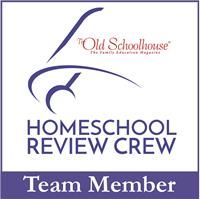
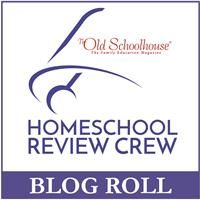













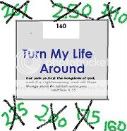
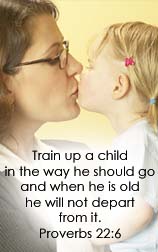



![[PREMIO2009.png]](https://blogger.googleusercontent.com/img/b/R29vZ2xl/AVvXsEjXD_Gx-wZ9EM5hXKrEYLksEBkYfRQtmb8VDVTDG_yyLggQoFIstZsh4zszdG20KqErZicRzEhiNYLty7j3IMXJYsABqkXjr8pp-ncj71xCbpxlXGbGpZq2fTuDQqq1RMKV4DPcDBnBViA/s1600/PREMIO2009.png)
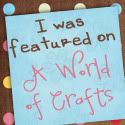
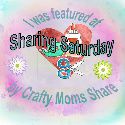


This looks like great learning and reading material. I'm going to share with my sister as she homeschools and I think she'd really love to learn about this company.
ReplyDeleteWhat a great way to teach the little ones such an important skill!
ReplyDeleteThis sounds great! I will have to check it out. We homeschool so I'm always looking for new things like this!
ReplyDeleteThis is great! It's awesome to learn of new ideas to help teach kids!
ReplyDeleteI don't know much about home schooling but this looks like an effective approach.
ReplyDeleteI am with you on the phonics approach! They use this method at my child's school and he is doing very well. I also started with my oldest with sight words when he was three and I think it's helped quite a bit with his reading level in kindergarten now. I will have to check this out and see if I can't start a few things with my three year old now,
ReplyDeleteMy little ones would enjoy these workbooks. They love to read and I like the approach.
ReplyDeleteIt looks like a great program. I have to admit I've never heard about it... until now ;-)
ReplyDeleteI love all the reinforcement the workbooks provide. What a great way to encourage reading.
ReplyDelete